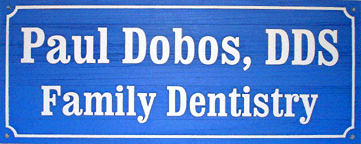
"Where Kindness & Excellence Meet”

ADVANCED PROCEDURESCROWNS Jaw muscles are among the strongest muscles in the body. Because teeth are subjected to tremendous pressures, a tooth weakened by root canal treatment or a large filling is likely to brake. A crown covers the weakened tooth and restores its strength. Two appointments are needed to rebuild a tooth with a crown. In the first appointment, any decay is removed from the tooth and the tooth is shaped to accept the crown. Then an impression is made of the tooth and a temporary crown is made. Between the two visits, the crown is fabricated (by a local dental laboratory), with high-strength porcelain over gold alloy, all ceramic material, or gold. The second visit is shorter. The temporary crown is removed, the permanent crown is adjusted and polished and then cemented in place. DENTURES The entire mouth is examined and a determination is made as to which teeth will have to be removed, and which will remain. Hopeless teeth are extracted. Partial dentures are fitted and connect to whatever teeth remain in the mouth. Complete dentures replace all teeth. There is an adjustment period all new denture wearers must go through. Time is required to address the sore spots and get used to them. But once accustomed to the dentures, functionality returns. Often implants can be used to further stabilize the dentures. IMPLANTS Implants can also be used as support as part of an implant bridge. This is an alternative to partial dentures, and has several advantages. First, there is no adjustment period to acclimatize the patient who, once the work is done, only feels teeth, not metal supports intruding into the mouth. Second, this slows the bone loss occasioned by missing teeth. Third, there is no discomfort or difficulty in eating. And, best of all, of course, they don't have to be taken out all the time. We also offer mini dental implants. These implants are about half the diameter of traditional implants and are used mainly to stabilize lower dentures. Mini dental implants can be placed in one appointment and be immediately used. The cost is 50-70% of standard dental implants. Call for a free consult. ROOT CANAL TREATMENT A root canal is then performed to clean out the infected tooth pulp, and disinfect the canals of the tooth. The only other treatment would be to extract the tooth. Once the infection is resolved, the canal(s) are filled in to prevent any further infection. Usually a core build-up and crown is recommended for restoring a tooth that has had root canal therapy. BRIDGES It is important that a missing tooth be replaced as soon as possible for several reasons. If not treated the teeth surrounding the gap begin to shift inward, creating a whole chain reaction of bad things. Teeth use their neighbors for support, and, with one missing, they start to "fall." As this worsens the bite changes in response to the pressure. This can eventually result in problems with the entire jaw, e.g. TMJ. The surrounding teeth deteriorate and it is just a matter of time before they, too, are lost. Gum disease becomes a serious problem, with the difficulty of treatment increasing as the neglect continues. TMJ TREATMENTS Problems in this area can cause:
Dental treatments for the condition can include replacing missing teeth, moving teeth, adjusting the bite, filling gaps between teeth, etc. There is no one solution that is right for all cases. Sometimes a plastic mouthpiece is used to prevent clenching or grinding that is contributing to the problem. If untreated and taken to extremes, surgery may be required to repair a badly damaged joint. |
120 E. Main St.
Stockbridge, MI 49285
517.851.8455